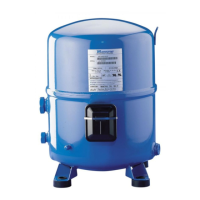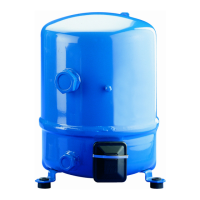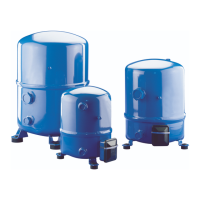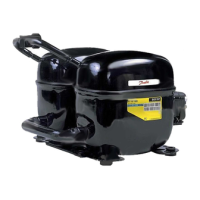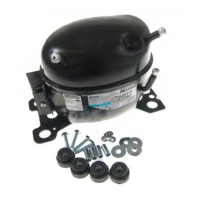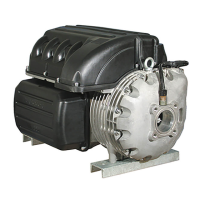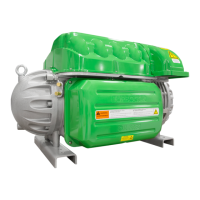Application guidelines
25FRCC.PC.002.A4.22
Installation and service
Refrigerant charging
It is recommended that charging be done to the
high side of the system. Charge refrigerant as
close as possible to the nominal system charge
before starting the compressor. Then slowly add
refrigerant on the low pressure side as far away as
possible from the compressor suction connec-
tion. The refrigerant charge quantity must be
suitable for both winter and summer operation.
R404A is a near-azeotropic mixture and must be
charged in the liquid phase. R507 is an azeotropic
mixture and can be charged either in liquid or
gas phase.
Warning: when a liquid line solenoid valve is
used, the vacuum in the low pressure side must
be broken before applying power to the system.
Installation checks
Oil charge and oil level
After a few running hours the main system
parameters shall be veried to ensure that the
system is working correctly or eventually to
adjust the settings.
• The evaporating temperature and condens-
ing temperature shall be compared with the
design conditions.
• The superheat at the evaporator outlet must
be adjusted to optimise the evaporator
performance. Generally a value of 9 to 11°F is
recommended.
• The compressor suction temperature gives
information about the suction gas superheat
at the compressor. NTZ compressors can be
operated at a maximum suction gas tempera-
ture of 68°F. Note that extremely low superheat
values can increase the risk of unwanted liquid
oodback to the compressor. When a too high
superheat is noted while the expansion valve
setting is correct, the suction line insulation be-
tween evaporator and compressor should be
checked and eventually replaced by a higher
quality insulation.
• A too high discharge gas temperature can
indicate a malfunctioning condenser, too high
suction gas superheat. Measurements through
a probe sensor pushed against the discharge
tube are not accurate. From 240°F, we rec-
ommend to use a thermocouple, brazed and
insulated on the discharge tube, 4 in far from
the compressor body. The maximum allowed
discharge temperature is 275°F.
• Power and current consumption shall be
compared with the table values at measured
evaporating and condensing temperature.
• When after commisioning the liquid sight glass
indicates moisture, the lter drier must imme-
diately be replaced.
The oil charge must be checked before commis-
sioning (1/4 to 3/4 of the oil sight glass). Watch
the oil level at start and for the rst 15 minutes
after start. Check the oil level again after a mini-
mum of 2 hours operation at nominal conditions.
In most installations the initial compressor oil
charge will be sucient. In installations with line
runs exceeding 66 ft or with many oil traps or
an oil separator, additional oil may be required.
Normally the quantity of oil added should be no
more than 2% of the total refrigerant charge. This
percentage does not take into account oil con-
tained in accessories such as oil separators or oil
traps. If this amount has already been added and
the oil level in the compressor keeps decreasing,
the oil return in the installation is insucient.
Refer to section "Piping design". In installations
where slow oil return is likely such as in multiple
evaporator or multiple condenser installations
an oil separator is recommended. Always use
Danfoss 160Z lubricant for systems with NTZ
compressors and R404A or R507.
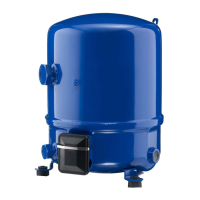
